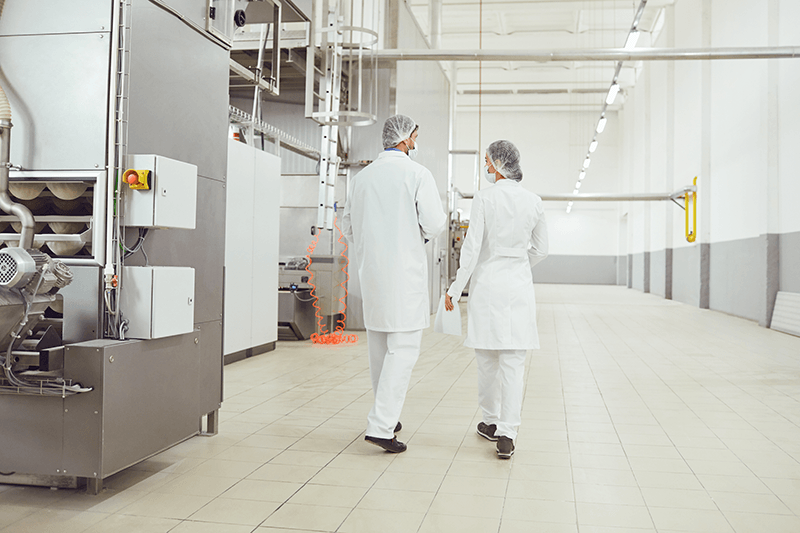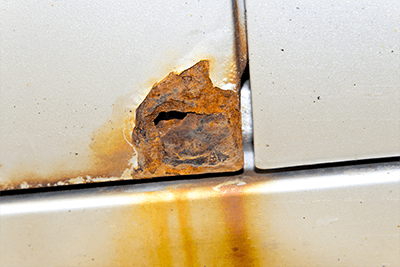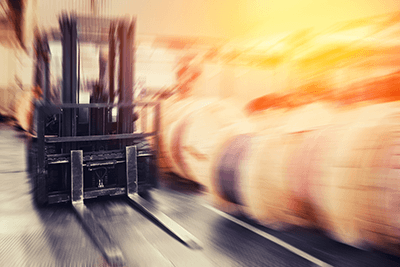5 Compliance Risks Hazardous To Food And Beverage Facilities
By Donald Markham

Of all the major industries, food and beverage is perhaps the most heavily regulated.
This is for good reason, since food safety violations in controlled environments can result in foodborne illnesses and death in the most severe cases.
Another thing that’s just as troubling are the immediate consequences processors and distributors face if something like this were to happen at their facilities. We’re talking: fines and penalties, media scrutiny, and even shutdowns.
One could also say it would damage their corporate reputation, while calling into question the oversight practices of the food & beverage industry as whole.
But let’s face it, the FDA, SQF, USDA and others aren’t going to stand by and let this happen.
Quite the opposite, actually, given their likelihood to issue violations rather than risk leaving anything to chance on their watch.
So the real question is:
How do facilities and operations specialists—responsible for maintaining the safety and sanitation of controlled environments—put their best foot forward when facing regulatory audits and inspections?
To answer this we must first uncover 5 major food safety and compliance risks that could land you in hot waters with the powers-that-be, if left unchecked.
Only then can you actually know what steps to take to stop regulators from breathing down your neck!
RISKS TO BE CONTROLLED AT
FOOD & BEVERAGE FACILITIES
1. CORROSION

Given daily sanitation procedures, involving extreme moisture and harsh chemicals, corrosion is one of the most critical threats to food quality and safety. In fact, according to NACE International, the world’s leading corrosion control organization, yearly corrosion-related costs in the food & beverage industry exceed $2 billion.
Regulators therefore are never content to let rusty surfaces that can contaminate food and beverage products—either through direct or indirect contact—go unresolved.
Instead, in environments where they are most easily exposed, such as processing and packaging, they’ll almost certainly hand down some form of punishment if they deem surrounding equipment or materials no longer suitable in resisting corrosion.
2. CONDENSATION

Aside from the fact that condensed water droplets can contaminate food and beverage products—through all sorts of impurities and microorganisms—they also create slipping and falling hazards on the ground. Studies have shown, for instance, that 30% percent of workplace injuries in the food & beverage industry can be traced back to accidental slips.
This is particularly the case in high-moisture environments that involve two-way air exchanges on a regular basis, like cold storage facilities where warm air makes its way through the top of the cooler or freezer and cold air escapes along the bottom.
So, in the event your cold storage facilities are prone to heavy traffic, this means it won’t take long for regulators to call out accumulated condensation displayed by obvious water marks and puddles that put on-duty personnel in harm’s way.
3. INFESTATIONS

Infestation threats involving any number of bugs, insects, and pests are of dangerous concern for food safety, as they have been shown to spread diseases, damage products, and compromise the integrity of food and beverage environments.
And while there are many alternatives that claim to “boost pest control,” most of them do so after intrusions have taken place. Keep in mind, however, that in specific areas where bugs and insects are likely to convene—such as warehouse and dumpster openings—this can happen almost regularly.
As for regulators, their first order of business won’t be to help you get rid of these pests. They’ll be far more concerned with how they were able to breach your defenses in the first place, likely handing out a violation notice in the process.
4. OCCUPATIONAL ACCIDENTS

The potential for accidents in fast-paced industrial environments isn’t something that should be taken lightly, especially when they can lead to severe injuries and production losses that someone eventually has to answer for.
So, before it’s too late and the damage is done, the very best thing you can do, starting now, is mitigate any potential accident risks by making sure not to overlook any equipment that can break easily and cause bodily harm.
Once that’s out the way you can go back to work knowing you’ve done everything in your power to ensure the safety and security of your facilities, which means regulators won’t be able to say or do anything that you won’t be prepared for.
5. AIRBORNE CONTAMINATION

Whether in liquid or solid form, what most contaminants, specifically bioaerosols, have in common is that they travel by air, infusing anything they touch with harmful microbes. As Food Safety Magazine puts it, these very same airborne contaminants pose a “substantial risk” to products such as dairy, raw meats, and fruit juices.
Of the various sources for airborne contamination some of most common ones include inefficient processes and equipment filters, which allow water and dust to make their way into areas where food and beverage products are being packaged or prepared.
Regulators are all too aware of this, so you can be sure they’ll pay extra-close attention to any sort of gaps where bacteria and viruses, found within bioaerosols, can easily cause Salmonella, E. coli, and Lysteria just to name a few.


 Donald Markham is an experienced facility access specialist helping facility operations teams move the needle in the areas that matter most with proven door and dock solutions that got your back in every situation!
Donald Markham is an experienced facility access specialist helping facility operations teams move the needle in the areas that matter most with proven door and dock solutions that got your back in every situation!